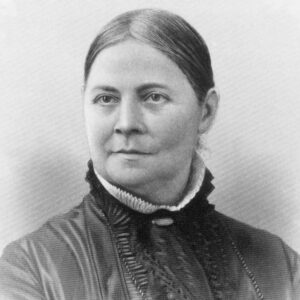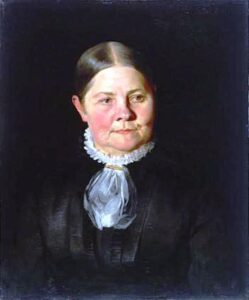Lucy Stone timeline – Lucy Stone was a noticeable U.S. orator, and an advocator for the right to vote to be extended to more people, especially to women.
She was the first woman to earn a college degree from Massachusetts in 1847.
Stone spoke out for women’s rights and against slavery.
She was known for using her birth name after marriage, contrary to the custom of women taking their husband’s surname.
Stone’s organizational activities for the cause of women’s rights yielded tangible gains in the difficult political environment of the 19th century.
Also Read: Biography of Naomi Anderson: the Women’s Rights Advocate
Who is Lucy Stone and what did she do?
Lucy Stone was born near West Brookfield, Mass., and disagreed with her father’s belief that men should be dominant over women. She educated herself and graduated from Oberlin College in 1847.
Lucy Stone was an early advocate of antislavery and women’s rights. She was born in Massachusetts. After she graduated from Oberlin College in 1847, she began lecturing for the antislavery movement as a paid agent for the American Anti-Slavery Society.
Birth and Early life of Lucky Stone
Lucy Stone was brought into the world on August 13, 1818, on her family’s ranch at Coy’s Hill in West Brookfield, Massachusetts.
She was the eighth of nine youngsters brought into the world to Hannah Matthews and Francis Stone. She grew up with three siblings and three sisters, two kin having passed on before her own introduction to the world.
One more individual from the Stone family was Sarah Barr, “Auntie Sally” to the youngsters; a sister of Francis Stone who had been deserted by her significant other and leftward upon her sibling.
Despite the fact that ranch life was difficult to work for all, Francis Stone firmly dealt with the family assets.
Lucy recalled her youth as one of “plushness”, the homestead creating all the food the family needed and enough extra to exchange for the couple of locally acquired merchandise they needed
Read as well: Alice Stone Blackwell biography: America Human Rights Activist

Lucky Stone character building
At the point when Stone reviewed that “There was just one will in our family, and that was my dad’s”, she depicted the family government as normal for her day.
Hannah Stone acquired a humble pay through selling eggs and cheddar yet was denied any command over that cash, now and again denied cash to buy things Francis considered paltry.
Accepting she reserved a privilege to her own profit, Hannah here and there took coins from his handbag or furtively sold a cheddar.
As a kid, Lucy despised examples of what she considered to be her dad’s unjustifiable administration of the family’s cash.
However, she later came to understand that exceptionally was to be faulted, and the foul play just illustrated “the need of making custom right, assuming it must rule.”
From the instances of her mom, Aunt Sally, and a neighbor disregarded by her significant other and left penniless. Stone early discovered that ladies were helpless before their spouse’s kindness.
Read Likewise: Elizabeth Cady Stanton bio | abolitionist | human rights activist
Lucky Stone views after reading the verse of the scripture concerning women obedient to their husband
At the point when she ran over the scriptural entry, and thy want will be to thy spouse, and he will govern over you”, she was upset over what had all the earmarks of being heavenly approval of ladies’ oppression.
Furthermore, at that point, she contemplated that the directive applied uniquely to wives. Taking steps to “consider no man my”, still up in the air to keep command over her own life by never a wedding, getting the most noteworthy instruction she could, and acquiring her own livelihood.
Why is Lucy Stone so important?
A leading suffragist and abolitionist, Lucy Stone dedicated her life to battling inequality on all fronts.
She was the first Massachusetts woman to earn a college degree and she defied gender norms when she famously wrote marriage vows to reflect her egalitarian beliefs and refused to take her husband’s last name.
At age 16, Stone started instructing in regional schools, as her siblings and sister, Rhoda, additionally did. Her starting compensation of $1.00 a day was a lot lower than that of male educators, and when she fill in for her sibling, Bowman, one winter, she got less compensation than he got.
At the point when she fought to the school board of trustees that she had shown every one of the subjects Bowman had, it answered that they could give her “main a lady’s compensation.
Lower pay for ladies was one of the contentions referred to by those advancing the recruiting of ladies as instructors. To make training widespread, it should be at a moderate cost, and ladies can stand to educate for one-half, or even less, the compensation that men would ask.
Although Stone’s compensation expanded alongside the size of her schools, until she at long last got $16 per month, it was consistently lower than the male rate.
Read still: Susan B Anthony bio: A Social Reformer and Women’s Rights Activist
How did Lucy Stone fight slavery?
After her graduation, Stone returned to Massachusetts and began a career fighting for the rights of women and African Americans.
She gave her first speech on women’s rights in 1847. In 1848, she joined the American Anti-Slavery Society and traveled across the North, urging people to oppose slavery.
And also spoke in front of a number of legislative bodies to promote laws giving more rights to women. She assisted in establishing the Woman’s National Loyal League to help pass the Thirteenth Amendment and thereby abolish slavery.
Stone achievement and pursuit
Stone helped form the American Woman Suffrage Association (AWSA), which built support for a woman suffrage Constitutional amendment by winning woman suffrage at the state and local levels.
She also helped initiate the first National Women’s Rights Convention in Worcester, Massachusetts, and also supported and sustained it annually, along with a number of other local, state, and regional activist conventions.
Stone wrote extensively about a wide range of women’s rights, publishing and distributing speeches by herself and others, and convention proceedings.
In the long-running and influential Woman’s Journal, a weekly periodical that she founded and promoted, Stone aired both her own and differing views about women’s rights.
She called “the orator”, the “morning star” and the “heart and soul” of the women’s rights movement.
Stone influenced Susan B. Anthony to take up the cause of women’s suffrage.
Elizabeth Cady Stanton wrote that “Lucy Stone was the first person by whom the heart of the American public was deeply stirred on the woman question.
Together, Anthony, Stanton, and Stone have been called the 19th-century “triumvirate”, is a political institution ruled or dominated by three powerful individuals known as the triumvirs of women’s suffrage and feminism.
Some frequently asked questions and answers
Did Lucy Stone have any siblings?
Lucy Stone was born on Coy’s Hill in rural West Brookfield, Massachusetts. She had three brothers and three sisters; two of whom died when they were young adults; her sister Sarah, the youngest, remained close to Lucy for her entire life.
Was Lucy Stone married?
The answer is Yes. The husband is Henry Browne Blackwell but retained her family name based on mutual agreement with the husband.
Was Lucy Stone Black or white?
She was a white-American reformer, who was a pioneer in the abolitionist movement and women’s rights movement.
When was Lucy stone married?
On May 1, 1855, Lucy Stone and Henry Browne Blackwell were joined together in marriage.
Where did Lucy Stone meet her husband?
Lucy Stone spent the late 1840s and the early 1850s traveling across the United States. She was hoping to build support for both abolition and women’s rights.
On a trip to Cincinnati in 1853, she met Henry Blackwell, a businessman. Stone and Blackwell married in 1855.
What was Lucy Stone’s job?
Book editor
Journalist
Advocate
Professional Organizer
How old was Lucy Stone when she died?
75 years (1818–1893)
Where was Lucy Stone born?
West Brookfield, Massachusetts, United States
Why is Lucy Stone so important?
A leading suffragist and abolitionist, Lucy Stone dedicated her life to battling inequality on all fronts.
She was the first Massachusetts woman to earn a college degree. She defied gender norms when she famously wrote marriage vows to reflect her egalitarian beliefs. And also refused to take her husband’s last name.
What did Lucy Stone do for slavery?
Lucy Stone was an early advocate of antislavery and women’s rights. She was born in Massachusetts. After she graduated from Oberlin College in 1847. She began lecturing for the antislavery movement as a paid agent for the American Anti-Slavery Society.
Where is Lucy Stone buried?
Forest Hills Cemetery and Crematory Jamaica Plain, Suffolk County, Massachusetts,
Who was working against Lucy Stone?
As with any high-profile political movement, fissures emerged. After the Civil War, Stone found herself at odds with fellow suffragists Susan B. Anthony and Elizabeth Cady Stanton were both former allies who deeply opposed Stone’s support for the 15th Amendment.
Read More:
Barbara Clementine Harris: First Female Bishop in Anglican
David John Mellor: British broadcaster, barrister, and former politician
Bob Fitts Biography: A Songwriter and Gospel Musician
Garrett Morgan Net Worth: An African-American Inventor
David Rogerson Mellor: Designer, Manufacturer, and Craftsman
